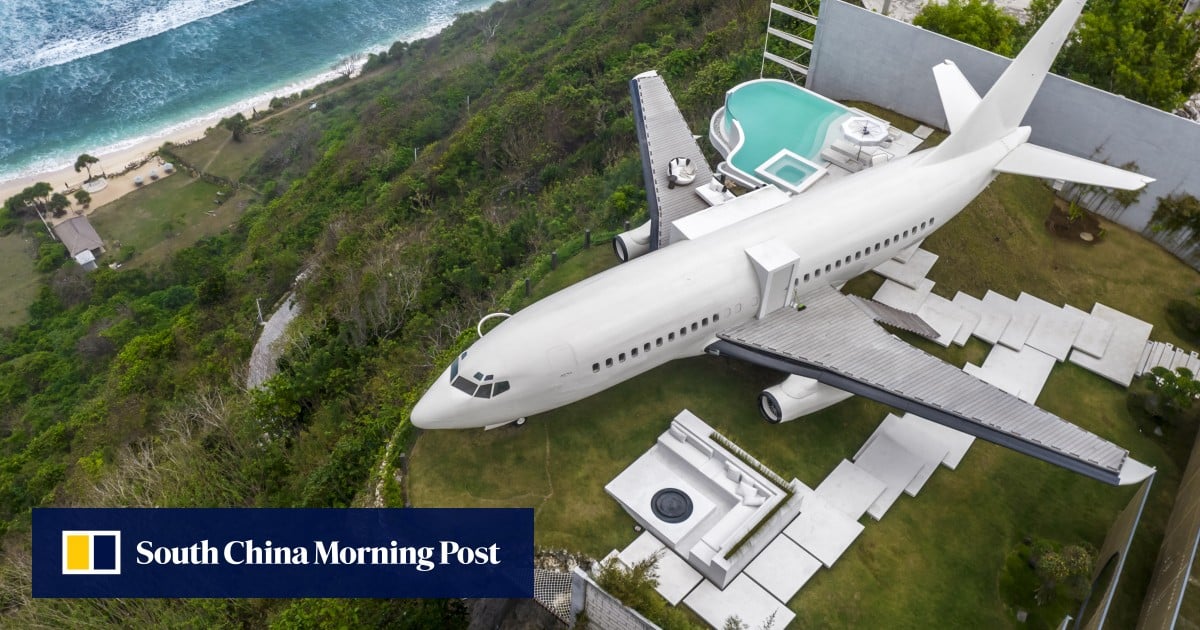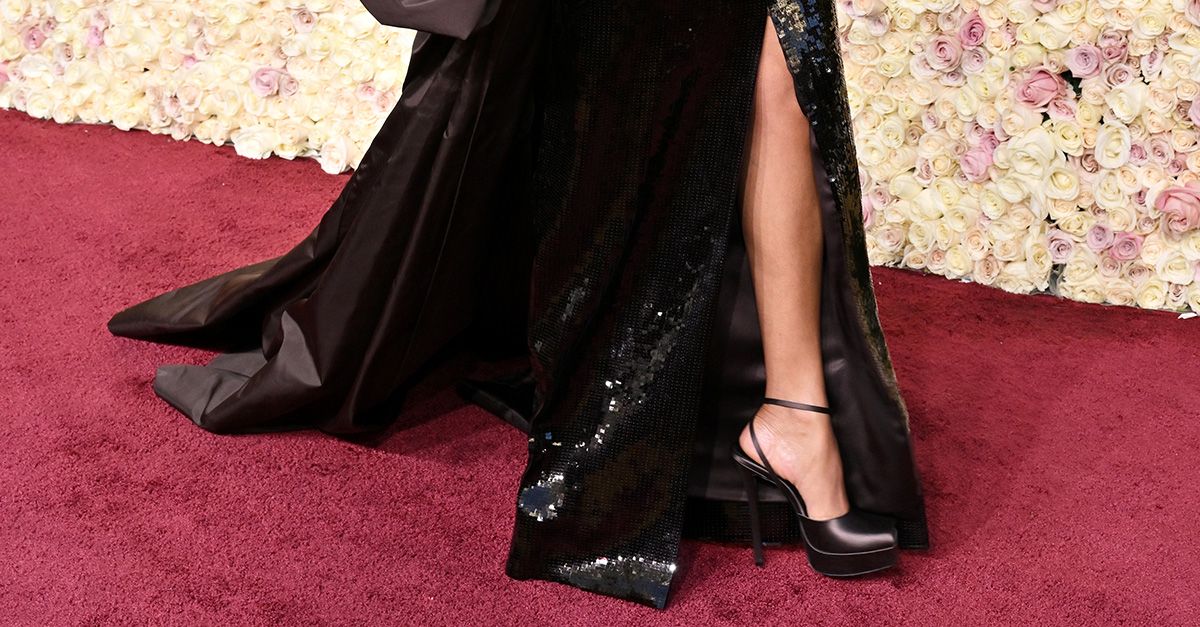After identifying and striking a deal with the owner – an Australian who bought the Boeing a decade before with the idea of turning it into a nightclub – Demin relocated it to a narrow plot of land he’d leased on the dramatic sea cliffs overlooking Nyang Nyang Beach, on Bali’s south coast.
His plan: to build the world’s first luxury villa inside a retired passenger jet complete with rock-star features such as an all-white interior, a jacuzzi in the cockpit and a sunset terrace on the ocean-facing wing.
The sheer originality of the plan, coupled with a handful of awe-inspiring drone shots of the Boeing in situ on the dramatic sea cliffs, garnered global media attention, featuring in hundreds of travel magazines and websites.
‘Most dangerous wonder of the world’ and more things tourists don’t get told
‘Most dangerous wonder of the world’ and more things tourists don’t get told
When I first met a baby-faced Demin in Bali two years ago, he was still high on the media buzz and drama he faced transporting the Boeing.
“Moving it cost a small fortune and took five days,” Demin, who claims to have no ties to Putin or any Russian oligarch, said at the time. “We had to bring in special equipment from [the adjacent island] Java: a 16-metre-long [52-foot] truck, a 50-tonne crane and another 25-tonne crane. The permits alone were a nightmare.
“In Bali, the roads are small so at a few places, we had to disassemble the plane in the middle of the road and reassemble it around the corner.
“Everything else I have done in business before this has been kindergarten compared to this.”
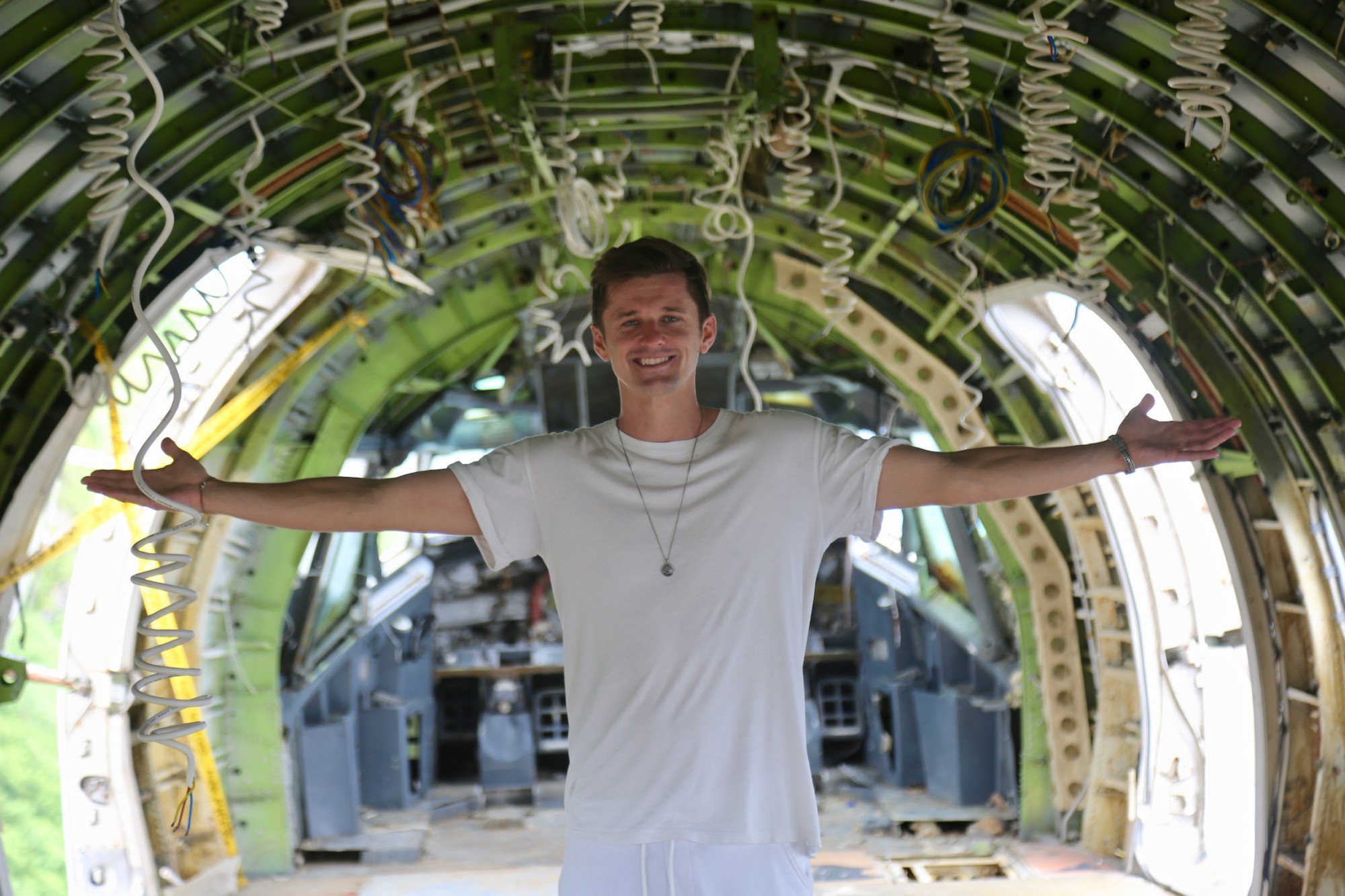
But the return on investment would be sky high, Demin boasted, because “once this is ready, it will be one of the most unique villas in the world, floating 150 metres above a cliff above the ocean”.
With dozens of luxury villas in Bali already under his belt in addition to Bubble Hotel Bali – three small hotels in which guests sleep in transparent bubbles parked on the beach or in the jungle, which was once rated by Airbnb as one of the world’s most unique places to stay – Demin appeared to have the wherewithal to turn his dream into reality.
Before the interview wrapped up, he invited me to be one of the first people to see the villa when it was completed a year down the track, adding that it would be the first of 30 private jet villas he intends to build around the world.
Do you have any idea how hard it is to build a pool that hangs off a cliff … with half a tonne of glass on it, not a single piece of which is straight?
In the end, it took two years to complete. Demin won’t disclose how much it cost but admits the project ran to around US$1 million over budget.
The drawn-out building process also appears to have taken a toll on Demin, as I discovered when we met again on the so-called Island of the Gods a few weeks after the world’s first private jet villa opened in January.
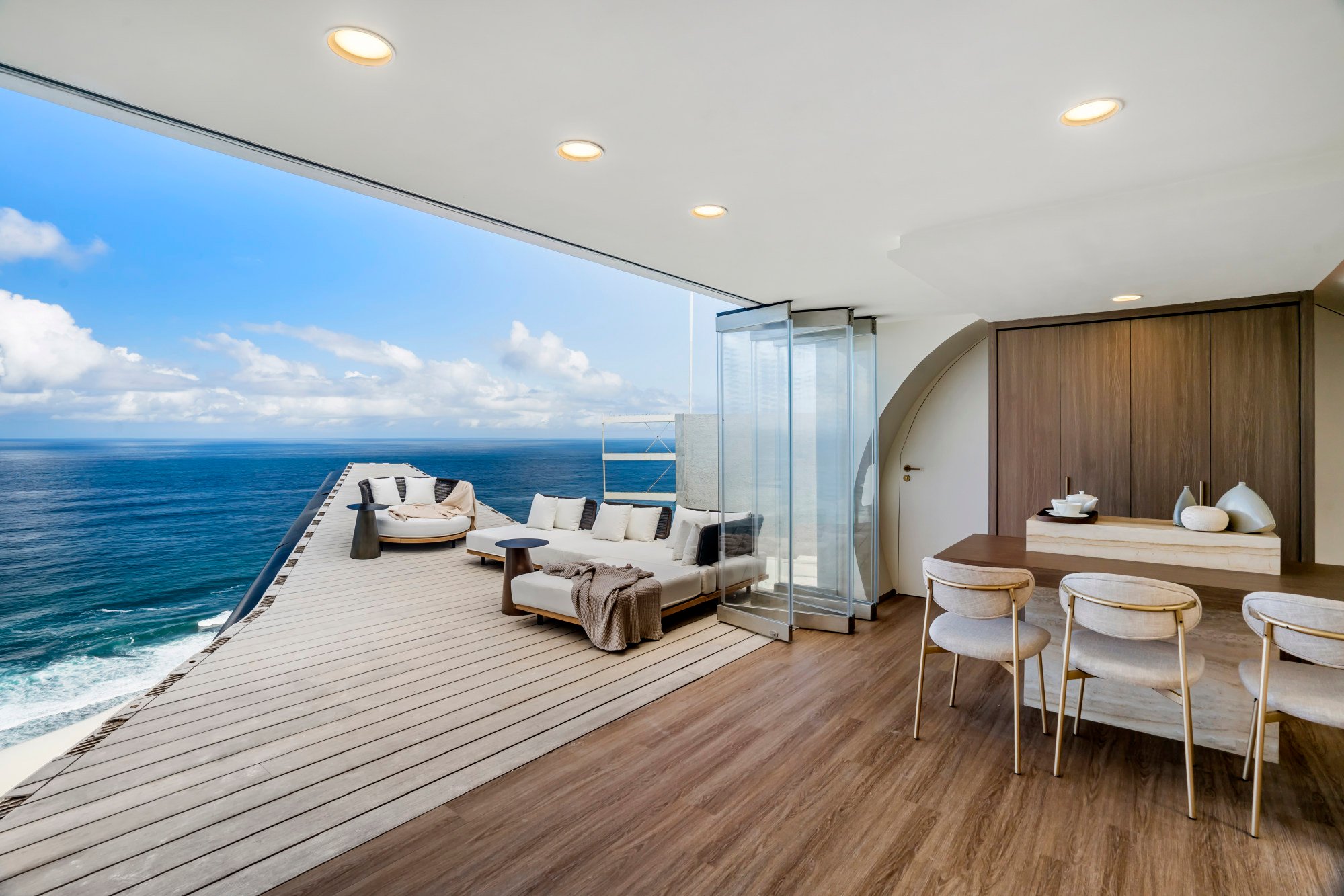
Now 33, Demin is visibly older and somewhat less enthusiastic, laughing shallowly when I remind him of his plan to build 29 more.
“It was my dream to make this happen and I achieved it. But it was incredibly hard and I won’t be making another one,” he says.
“There’s a billionaire in the US who wants me to make one for him; he already has the plane and the land, he just says come and renovate it and he’ll write me a blank cheque. I turned him down.
“I have 150 finished and ongoing construction projects, but this one project was more difficult than all of them put together.”
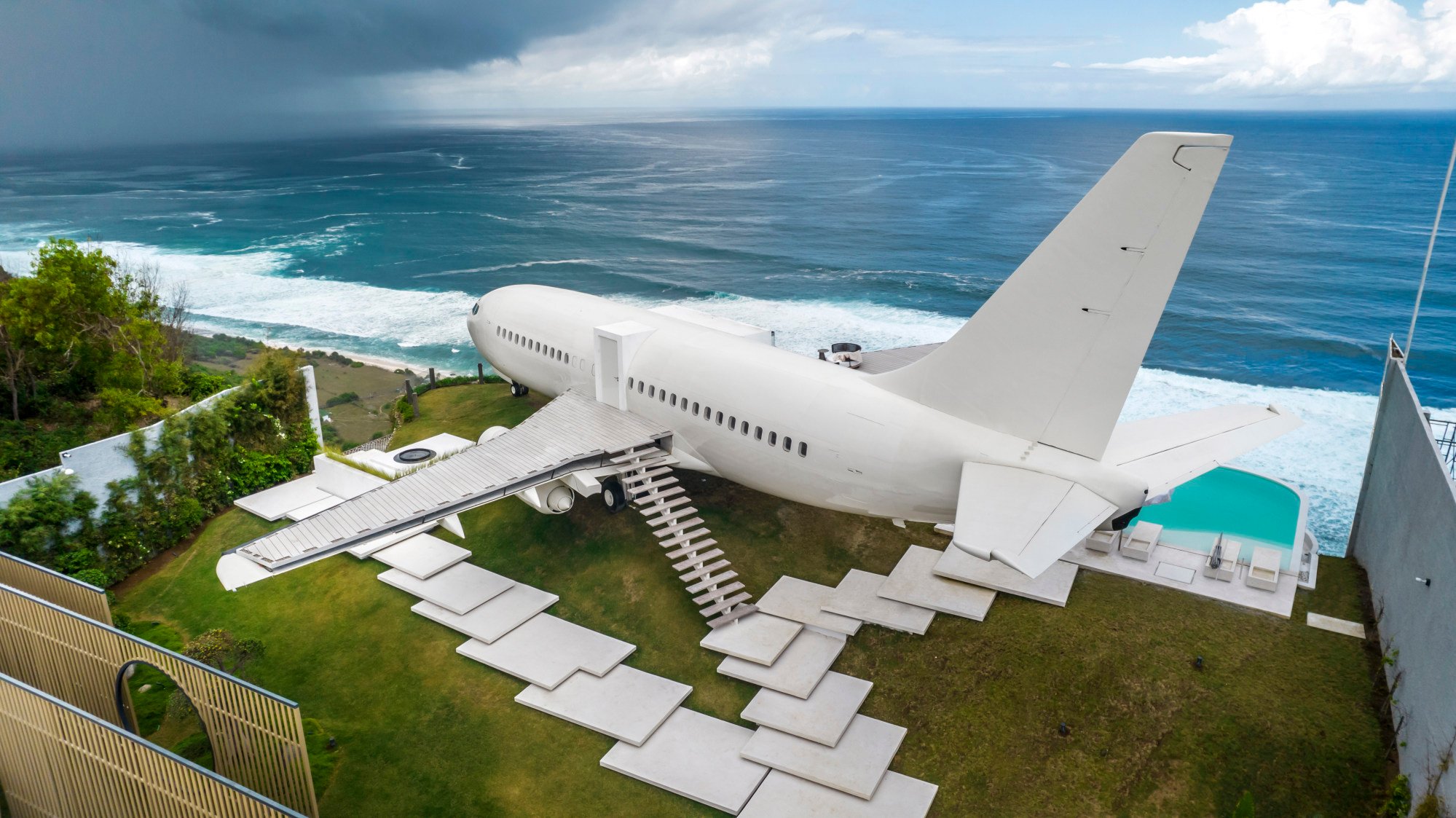
The difficulty, Demin explains, was caused in part by constant changes to the design, such as adding a helicopter pad and an infinity-edged, glass-sided pool cantilevered over the sea cliffs.
But most of the delays and cost blowouts were attributed to the challenge of designing, sourcing and installing custom-made fittings and fixtures for a curved superstructure with no straight surfaces.
To prove the point, he leads me to the cockpit, where the seats and instrument panel have been replaced with an oversized, hand-carved marble bathtub. To the six windscreens, Demin added two more with remote-control-operated electric windows to let in the sea breeze.
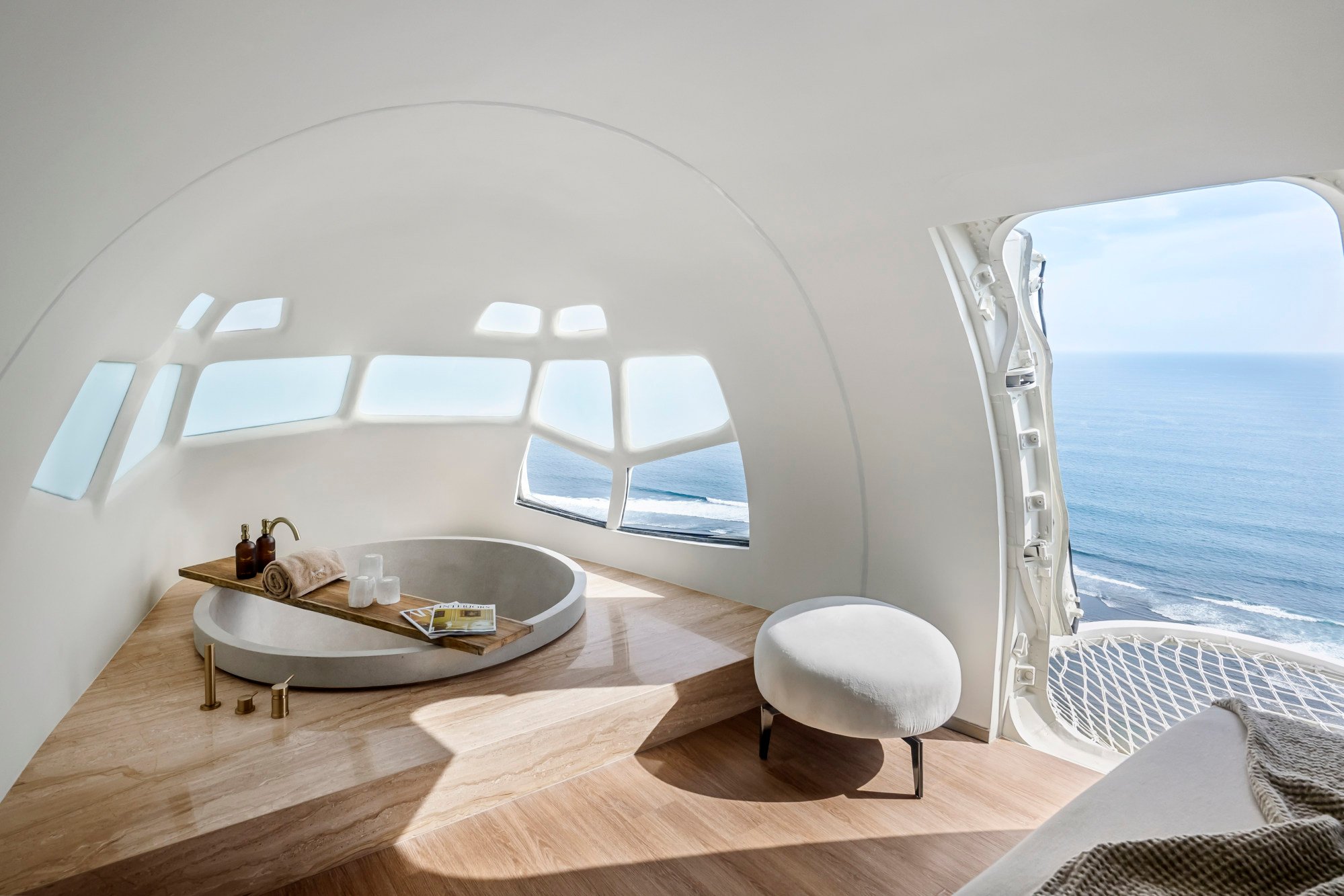
“We had 12 different contractors who came in and said they could do it until one finally succeeded,” he says. “In the end, we took the motor from a car and the windows were custom-made.
“Just about everything on this project was the same. Look at this door,” he says, pushing it open to reveal a safety net and incredible 180-degree views of the Indian Ocean and the beach and surf far below.
“When we started, this door wouldn’t even open. We had to make 3D models of all the moving parts and order them from different suppliers in different countries around the world. There were some parts we couldn’t find, so we made them ourselves with laser cutters. Who else could make these things?”
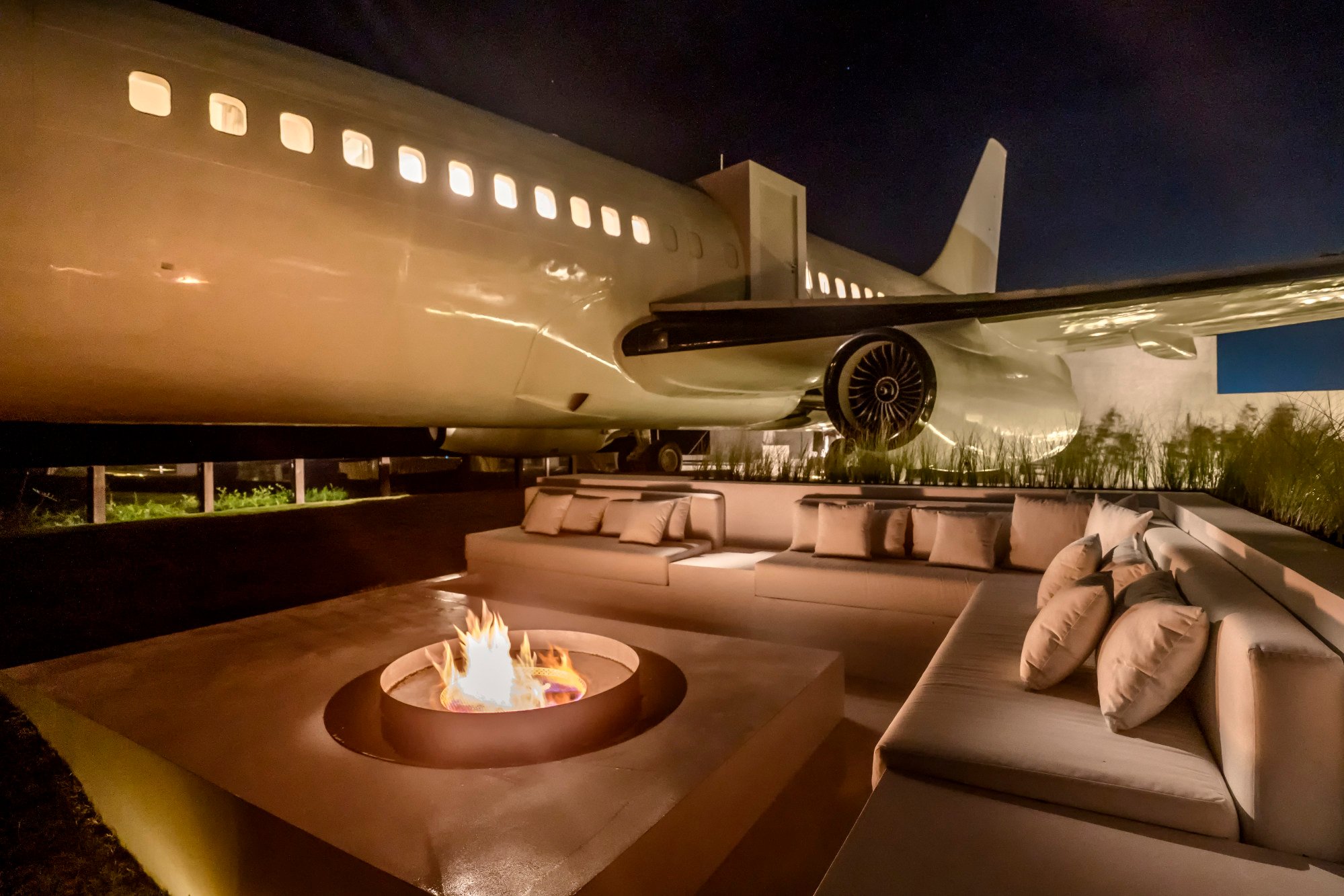
Demin faced similar challenges transforming a stock-standard Boeing bathroom into a presidential one.
“This toilet, we wanted it to be a custom shape and in a custom colour. There is only one factory in the world that makes them, in Italy. Each one cost a few thousand euros. The marble on these walls also came from Italy. The drain alone,” he says, pointing to the floor in the shower, “cost one thousand euros.”
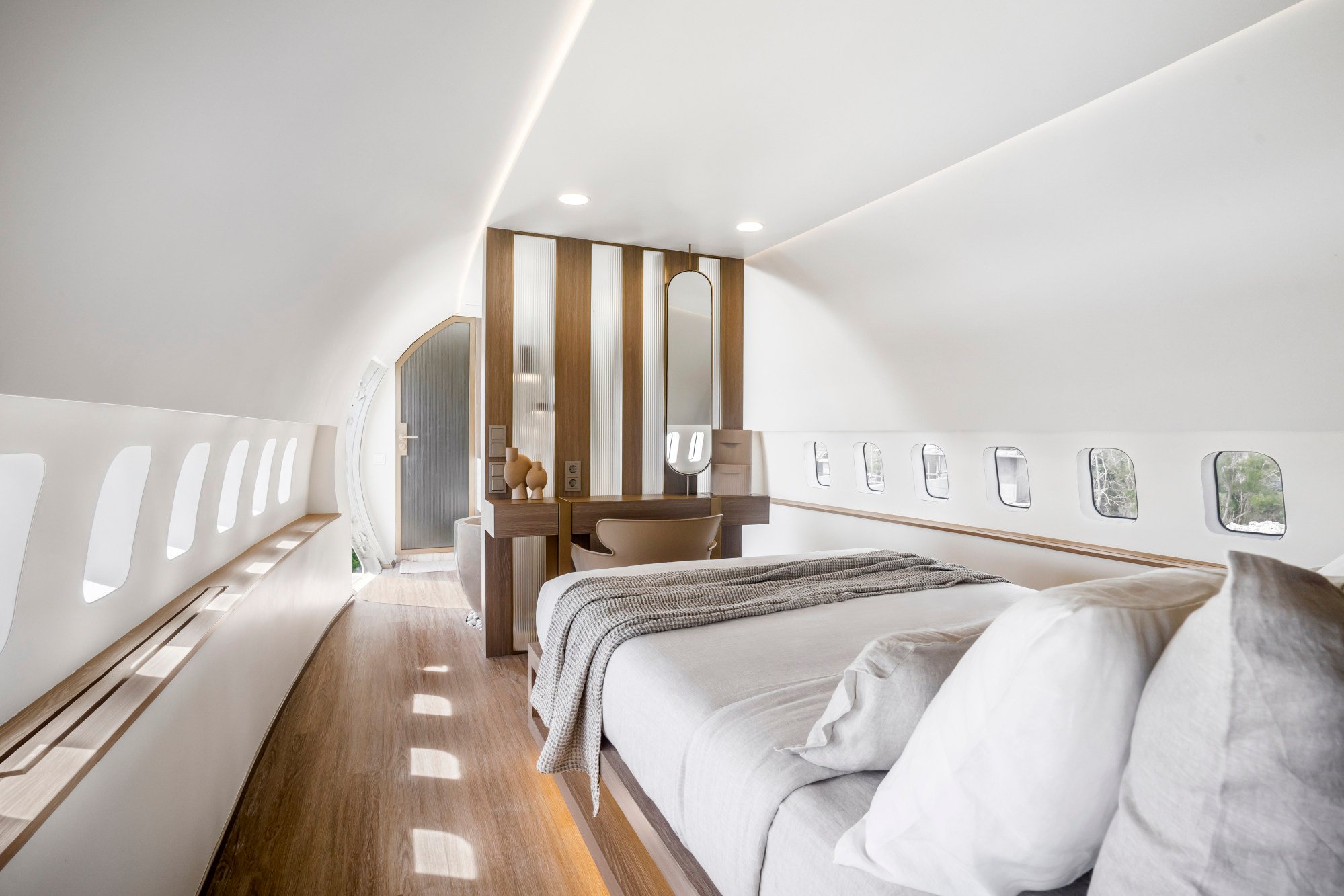
Turning the ocean-facing wing into a sunset terrace was even more time-consuming and costly.
“Originally, I wanted the railing to be made of tempered glass. But because the wing isn’t straight, each piece had to be custom-made in a factory. When the glass arrived, they were off-size, and when I asked them to do it again, they said I had to pay again. I wasn’t happy, but I had no choice; no other factory could do it.
Inside 3 new luxury Bali beach clubs, infinity pools, daybeds, drink deals
Inside 3 new luxury Bali beach clubs, infinity pools, daybeds, drink deals
“The second set was also off-size but by then I realised the glass was ugly and looked like an aquarium. The solution I settled on was acrylic posts, custom-made with LED lights inside that change colour so that at night, the whole thing lights up.
“This floor,” he continues, “it’s a special non-slip material made from recycled rice husks. And don’t ask me about the pool. Do you have any idea how hard it is to build a pool that hangs off a cliff, not just any pool but a glass-fronted pool with half a tonne of glass on it, not a single piece of which is straight?
“We had to install it piece by piece with a crane. It was a nightmare.”
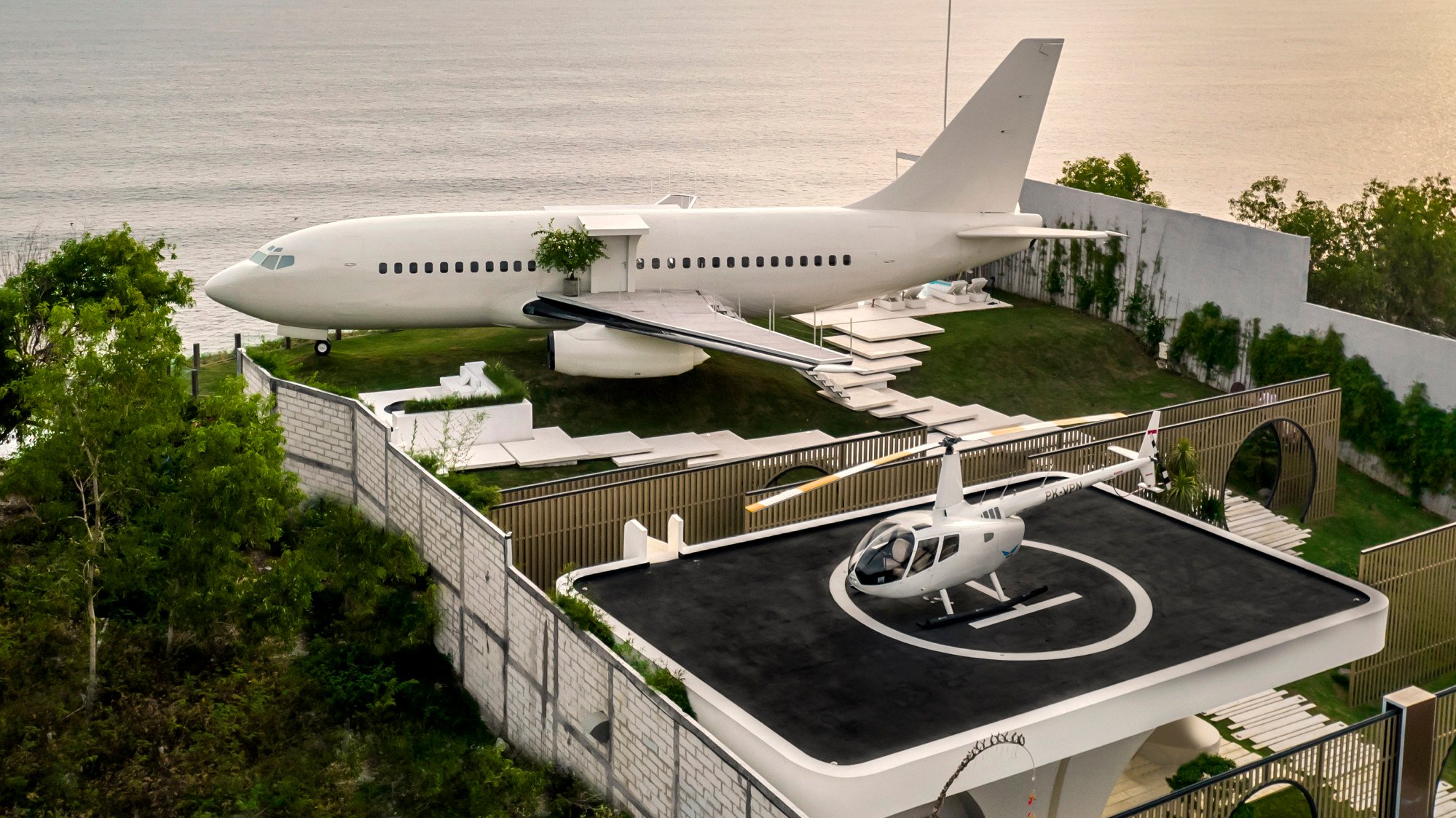
Listening to Demin, I begin to wonder what it is like to work for such a perfectionist.
“He texts me a lot. Like all the time,” says Kit Cat Cahill, a remote-area hospitality specialist from Western Australia who has filled the role of operations and project manager across all of Demin’s accommodation properties in Bali for the past three years. “But the thing I like about him is that he has an almost childlike quality in that nothing is impossible.”
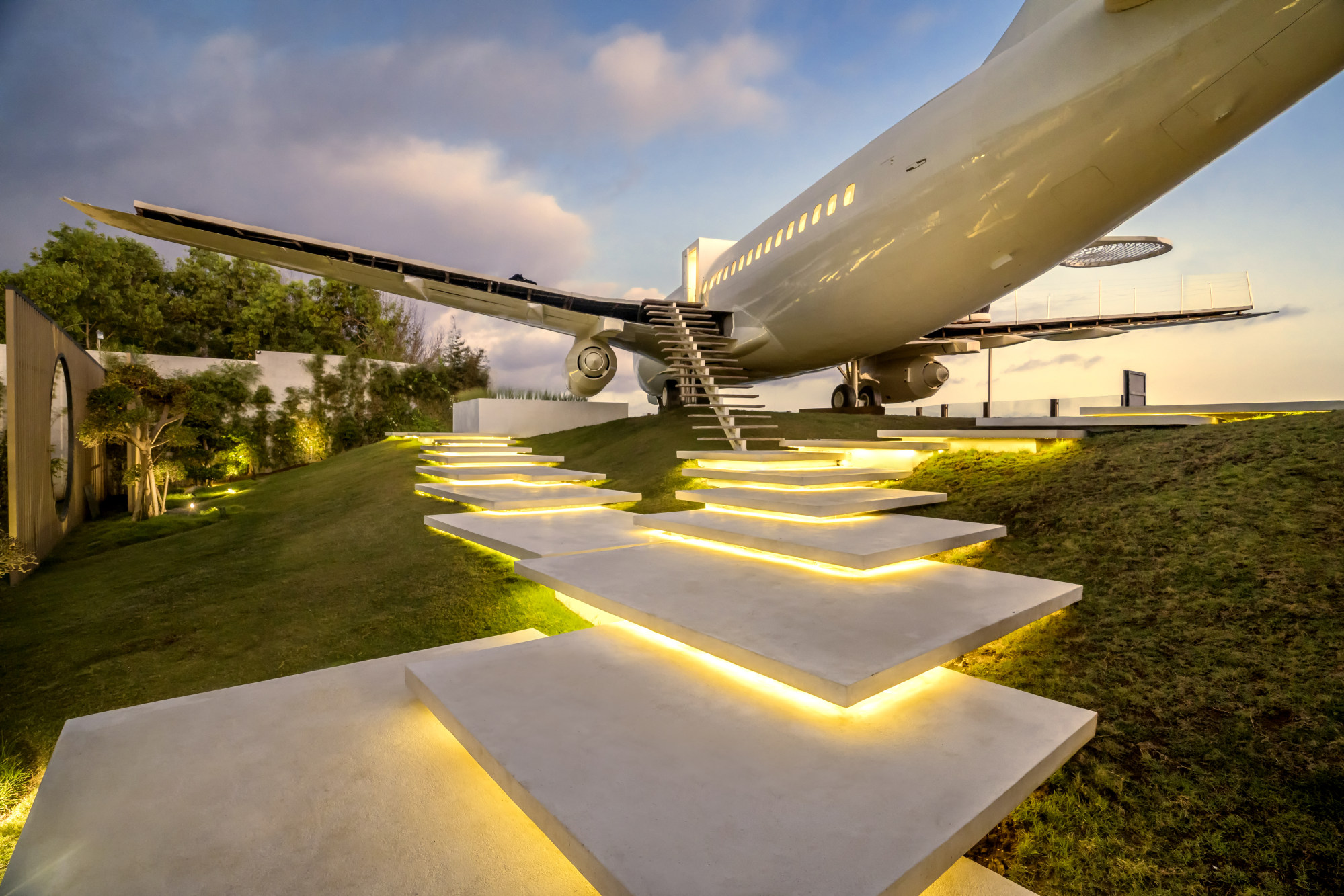
Cahill, who works seven days a week, says managing this villa is like nothing she has done in her 30 years in the industry.
“It’s not just a hotel. It’s a function space – we have already done a few weddings and product launches; and it’s a film set – we do fashion shoots all the time and tomorrow Paramount Studios are coming to film part of a movie here.
“I’ve also had some strange requests from the people who stay here. One wanted alpacas, just to put them on the lawn and look at them as they walked around. I did locate some – there are seven alpacas in Bali – but I couldn’t get them to the venue on time.
Where is the world’s highest road? The most famous? The most dangerous?
Where is the world’s highest road? The most famous? The most dangerous?
“Building a mini chef’s kitchen – we do private dinners for 12 people and cocktail parties for up to 50 – in this tiny space was also a mission; the pantry is where the staff toilets used to be. And now I have to figure out where to put staff beds so we can offer 24-hour butler services.
“Everything is so tricky here because this villa was designed not for operational and tactical outcomes but from an aesthetic perspective. The good thing is that Felix always encourages his employees to find their solutions.
“That means we can be quite independent and creative in our work, like the flying fox [a zip line] I designed to send food and drinks down to the bubble hotel,” she says, referring to the property set 150 metres below the jet, on the shores of Nyang Nyang Beach.
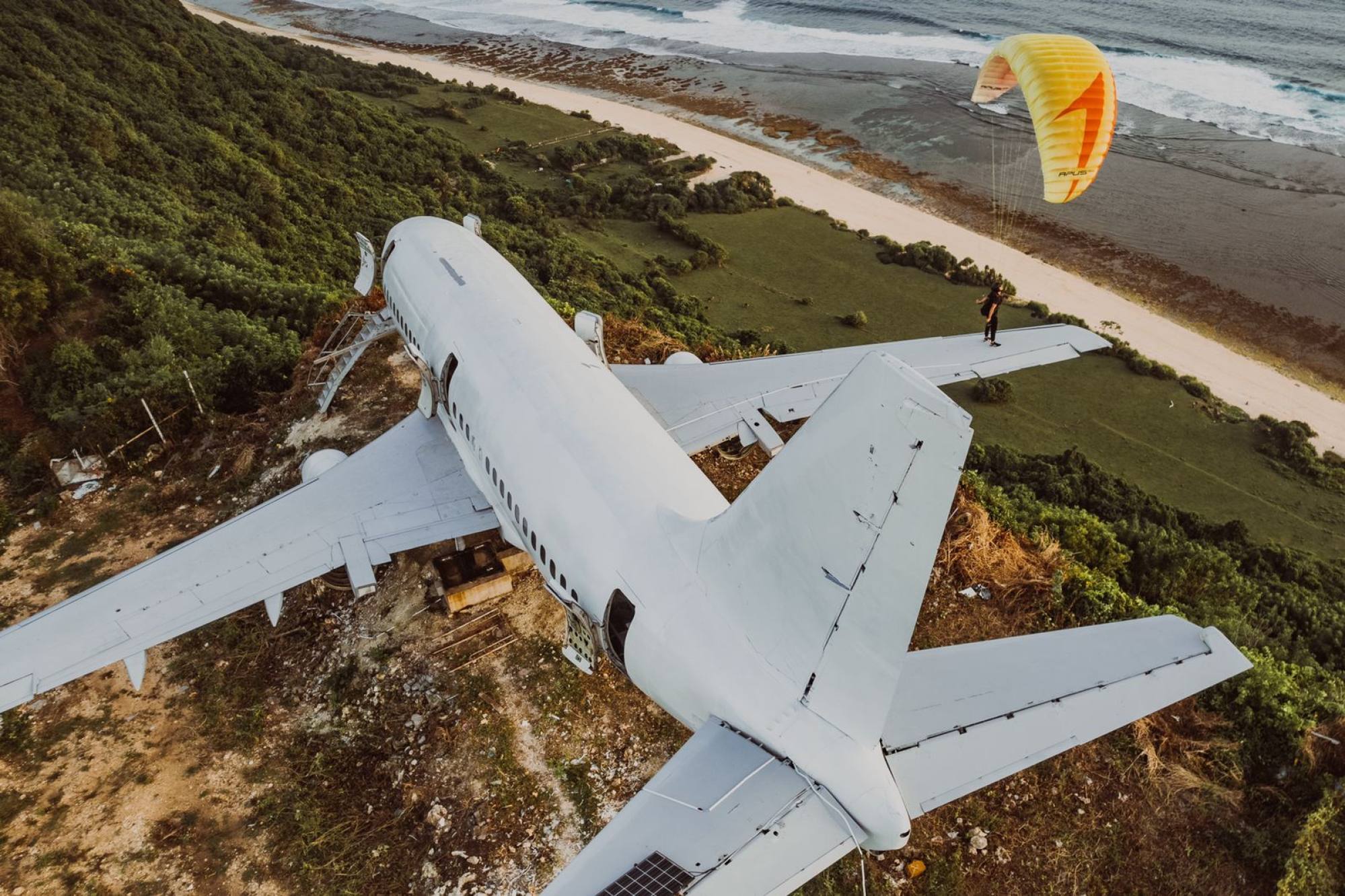
Rates at the Private Jet Villa start at US$2,000 per night and can climb to US$6,500. Management has already received more than 2,000 booking enquiries.
Demin shows me an Instagram shot of the villa posted by a celebrity guest that got 38 million views and another post on Facebook that’s been saved 400,000 times. He is also in negotiation with a major international airline to paint its logo on the side of the villa – a deal he says could see his entire investment returned to him in a single stroke of a pen.
“What advice do I give to people with crazy ideas like this?” he says. “Just do it. It will be very hard and it will take a lot of effort, but never give up. If you can dream it, you can build it. Eventually.”

